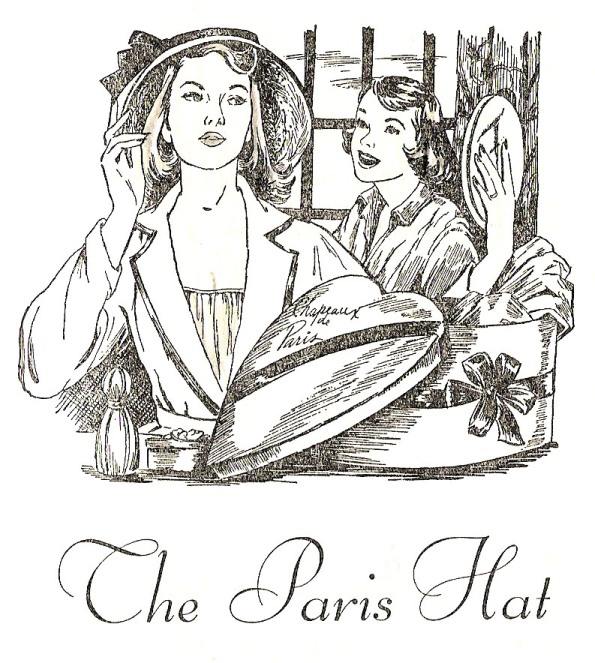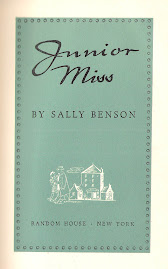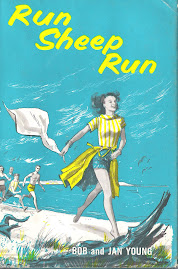 Title: Seventeenth Summer
Title: Seventeenth SummerAuthor: Maureen Daly
Publisher: Dodd, Mead, 1942 (Currently available from Simon and Schuster)
Setting: Pre-Pearl Harbor Fond Du Lac, WisconsinFun: Beers at Pete's; Cokes at McKnight's drugstore; the bakery truck; meeting the train.
Quote: "It's almost like a secret police system -- no one escapes being checked on. At least no one who counts. The checkers keep their eyes open for new prospects among the young sophomore girls who are growing up and showing signs of datable promise. They only watch out for the very pretty or very popular girls, so it is the most serious catastrophe of all not even to be noticed by the checkers...Most of them didn't know my name until I began to date Jack."In 1941, Maureen Daly, a college student, wrote a novel about a girl who falls in love with a boy just outside her social circle. Published a year later, Seventeenth Summer became the first "young adult" novel -- targeted specifically to girls too old for Nancy Drew but unwilling to read adult literature. More simply put, Maureen Daly established the genre I write about here. But Seventeenth Summer is more than some obscure 1940s novel. It's a classic work -- a beautiful, subtle and haunting story which distills, moment by moment, the suspense of adolescent love, the cross-currents of family life, and brevity of the Wisconsin summer, all against the background of small-town life in the months before World War II.
Nominally, Seventeenth Summer is about the relationship between Angie Morrow and Jack Duluth, who comes into her life because he drives the bakery truck. Although the social gulf between them is not immense, Jack has no prospects beyond the bakery, while Angie is going to college at the end of the summer. In actuality, much of the book is caught up with Angie's observation of her family-centered life. She is poised between the brand-new idea of what independence with Jack might mean and regret at the disruption of everything she knows. She observes other teenagers at roadhouses and keg parties with the distance of an anthropologist, preferring the structured world of her close-knit family. And yet she can't quite turn away from the thrill of Jack. One of the things that marks Seventeenth Summer as "young adult" is that Daly acknowledges Angie's physical attraction to Jack:
His shoulders above the water were smooth and brown, shiny with the wet, and when he moved the muscles in his arms made a barely perceptible ripple. He swam out a short distance, and then signaled me to come in.
Why is there always that self-conscious feeling about looking at a boy in swimming trunks?
I had always thought it was something like voting, that you weren't really supposed to start feeling with your heart till you were at least twenty-one. And here I was looking at him so hard I could almost feel myself seeing the clean, wet look of his crew cut and the familar coarse knit of his football sweater, while my heart was pounding till it made my voice quavery.
Although Angie politely refuses to elope with Jack, at the end of the summer she leaves Fond Du Lac for the outer world he represents.
Maureen Daly never wrote another teen novel. She married a journalist and later wrote about her travels with him, as well as some books for younger children. If Seventeenth Summer was to a large extent drawn from her own life -- and it reads that way -- this is understandable. The teen writers who came after her would be more prolific, and more professional, but also shallower and lighter. But the same themes established by Daly -- the pull between family and independence, the thrill of attraction, and the quest to grow up, would be at the center of them.











You've really convinced me to read this one! I must try and find a copy. Where do you source the books you blog about?
ReplyDeleteIn this case, 17th Summer is still in print (Simon and Schuster in the US.) However, most of these books are long out of print and I pick them up on Ebay or in used book stores. I hope you like it. I think it's a fantastic book which should be better known.
ReplyDeleteI read Seventeenth Summer for the first time in 1964 when I was 12 years old. My mom bought it for me at a used bookstore for a dime. I fell in love with it. I later became a school librarian and insisted the book be in every library I served. I would re-read Seventeenth Summer every so often and it was always fresh. I read it so often that I found several discrepancies in the text but it never seemed to matter. I read it for the last time in 2007, just before I retired.
ReplyDeleteIt makes me happy that it is still in print.
I read this book for the first time in the late 90s as a 7th grader. It's been my favorite books since, and I try to read it at least once a year. I love the imagery, the detailed wording and how Maureen Daly draws you in as if you feel a part of the story. My dream is to get to Fond du Lac, WI one day and just imagine it as Angie Morrow would have seen it!!
ReplyDeleteMe too. I love the book. I read it for the first time when I was 13 years old - bank in the 1970s. I would love to see the Fon du Lac she experienced.
Delete